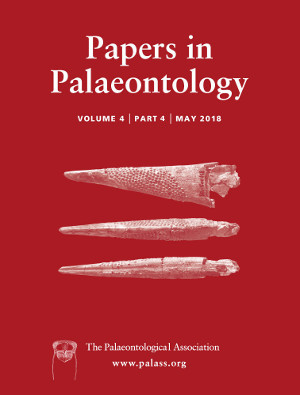Reg. Charity No. 1168330

A recent description of paired gnathobase‐like structures (GLSs) in the head region of the radiodont Amplectobelua symbrachiata raised the question of whether these appendicular structures are more widely spread within Radiodonta, putative lower stem‐group euarthropods. Here we describe a new genus of Radiodonta, Ramskoeldia gen. nov., that also bears GLSs. Its two new species, Ramskoeldia platyacantha sp. nov. and R. consimilis sp. nov., are distinguished based on the morphology of their frontal appendages. The presence of three pairs of GLSs associated with reduced segments posterior to the head and the detailed morphological similarities of the GLSs suggest that Ramskoeldia is closely related to Amplectobelua Hou et al., and they are classified together in the revised Family Amplectobeluidae. Other diagnostic characters of this family include the lack of a radially‐arranged oral cone, instead sharing mouthparts composed of smooth and tuberculate plates, and a frontal appendage with three podomeres in the shaft and prominent larger endites on podomeres 4 and 8. Due to its lack of GLSs and the different morphology of its mouthparts, membership of Lyrarapax Cong et al., in Amplectobeluidae cannot be confirmed. Appraisal of available evidence indicates that the morphology of the feeding structures, including frontal appendages, the mouth apparatus, and GLSs, serves as a fundamental source of characters in the classification of radiodonts.